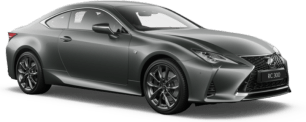Is there anything more retro than sitting down low in a sports car with just centimetres separating your buttocks from bitumen?
This is the BRZ experience, but once sat snug, ensconced in superbly supportive sports seats, you forget all about the fumbled entry and graceless egress that awaits and instead revel in the moment.
Arms outstretched, hands gripping a perfectly-sized wheel, ahead of crisp electronic instrumentation, with controls so intuitively placed and presented that soon everything’s operated via muscle memory, Subaru has nailed the ergonomics.
Oh, and the joy of a handbrake lever! It's just so naturally and beautifully driver-orientated.
Okay. Owners of the original (ZD6) generation will already know all this. So what’s changed? Besides nothing conceptually, basically everything executionally.
The dated old dash has been ditched for a dated – but much prettier – new fascia, that’s all horizontal layers and matt black plastic, just like Japanese sporty coupes were in the 1970s and ‘80s. Except for the 8.0-inch touchscreen, of course, which looks a little aftermarket with its low-res TomTom nav, but is easy to figure out and a cinch to use on the go.
The climate control and toggle switches are lovely to use, there’s bottle storage in each door and, as a bonus for going automatic, an extra beverage holder to the pair beneath the centre-console lids exists. This matters if you're regularly transporting thirsty passengers cramped out back. More on that in a moment.
Other than the contortions required to get in and out, the BRZ’s is actually shockingly practical – from the surprisingly good all-round vision afforded by all that glass area as well as thinner pillars and sleeker exterior mirrors than before, ample ventilation and handy storage, to front-seat comfort and a compliant ride.
Plus, you’ll soon learn that the frameless doors provide easier entry and exiting when their windows are down. You wouldn’t think twice about commuting in this baby. Cancel that expensive small SUV order now!
The tS’s extra suede-esque upholstery, baboon’s butt red starter button and STi instrumentation cluster lift the ambience above the cheap sports car vibe of the 2012 original, while the whole ensemble is superbly screwed, clipped and/or glued together.
Gripes? For such a recent model, the lack of a USB-C port anywhere in the BRZ is an oversight. There are no overhead grab handles to help haul yourself out. At speed there's too much road noise. And only the front passenger seat has a single-action slide-and-tilt motion with return for getting through to/from the back, meaning you’re forever grappling with seat levers if you need to enter/exit from the driver’s side.
Now, granted, the rear pair of seats are occasional-only for taller folk, but there’s every chance the '+2' element of the Subaru is the main reason you’d be pondering one of these over, say, the strictly two-seater MX-5.
At 178cm, your tester just about hits the height limit for back-seat accommodation. Actually, the cushion and backrest base are thoughtfully padded and angled, but scalps scrape ceiling and/or glass depending on posture, the front-seat occupants need to slide their chairs forward for knees to fit and there’s barely any space for bigger feet.
But then, this is not the point of a coupe. The fact the BRZ is fine for shorter trips adds another level of practicality, even if there are no grab handles or reading lights to access. And, thoughtfully, the cabin engineers created the centre console lid to remain open for rear-seat access to cupholders, two USB-A ports and a single aux (!) outlet.
That's why the auto's extra cupholder comes in so handy.
Further back, the one-piece backrest folds flat to boost cargo-carrying practicality and versatility, since the boot is a modest 201 litres in capacity. And, it’s now easier to do that thanks to a boot-sited backrest release. It beats having to clamber inside the car every time, as per the earlier generation BRZ.
Keep in mind the tS loses the other BRZ grades’ full-sized spare wheel, presumably in the name of dynamic precision. A tyre-inflation kit is a poor substitution in puncture-prone Australia.
Oh well. At least you’ll be in a pleasant and charming coupe environment whilst you wait for roadside assistance.






